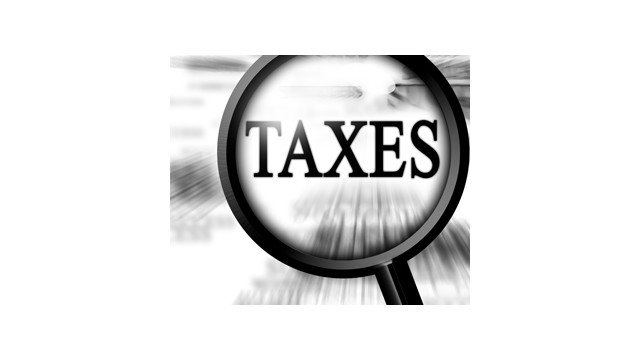By Ryan Gamble, Managing Director; Philip R. Pulliam, Director; and Lauren Pozna, Associate, Riveron.
The Tax Cuts and Jobs Act of 2017 has simplified the tax code in many ways, including an increase in the standard deduction for individuals, removal of corporate Alternative Minimum Tax and an increase in bonus depreciation. The result of simplification creates less subjectivity for tax departments, advisors and practitioners. While creating many opportunities for experienced tax professionals to excel, this effect, in combination with advancing technologies like Artificial Intelligence, automates routine processes that may ultimately replace new tax associates’ daily tasks. So where does that leave tax practices and their entry level associates?
It’s time to reinvest in the tax associate and advance their skillset earlier than the normal path allows. AI is quickly becoming the new tool and starting point for public accountants and other tax practitioners. Its purpose is to provide efficiency and to arrive at new opportunities by allowing the associate to focus on more qualitative tasks. The reinvestment starts with higher education institutions and businesses vetting their traditional curricula and training programs and adding an increased focus on technical applications, data analytics, business context and client service.
AI is incredibly effective at recognizing trends and patterns due to the ever-evolving data it collects over time. We see this in our everyday interactions with Siri, Alexa and Google Home, which can produce quick answers to technical questions. With the creation of Natural Learning Processing (NLP), AI can read documents and produce an output from said information, such as K-1 aggregation, with an increased data processing rate. Because of these capabilities, AI has replaced significant aspects of a tax associate’s daily role, specifically forecasting, speed of research and data processing. While tax associates are capable of managing AI, there should be more to the entry level tax job. To create a more effective tax associate in the AI world, it’s time to adapt.
Universities and businesses can, and should, fill the gap by reassessing education and training and placing an increased focus on applying technical skills to real world scenarios. While this may seem obvious, many first year associates continue to struggle to get their feet under them. In order for the next generation of tax professionals to succeed, it is important for new associates to have a better understanding of the “real” world of tax. It begins with the building of foundational knowledge of how tax-specific statutes, regulations, administrative pronouncements, and the like, affect advisory projects and strategic planning.
An associate should come to a firm with the working knowledge of how to appropriately employ their skills and apply them using a firm-wide technology in order to produce a result or conclusion on a given issue or task. Technology advancements are ever-changing, and as a result, improving an associate’s ongoing technical skillset will leave them more successful.
While every case is different, a normal day for an entry level tax associate involves compiling, transforming and analyzing data. With the simplification AI brings to the table, many tasks assigned to associates have been absorbed. Still, it’s just as important for associates to adapt and understand what the data means as applied to a specific task. While it’s true that AI can spot patterns and trends, what it lacks is the ability to qualitatively analyze data. Associates will need to provide their clients with the context behind the analyses utilized to arrive at their conclusions. If contested, taxing authorities will expect a substantive analysis.
An introduction to the tools an associate will use is another way universities and businesses can improve the skillset of associates as they enter the workforce. Microsoft Excel (Excel) is one of the most used programs in accounting and tax modeling. However, entry level associates may know only the very basics, making on-the-job learning a must. To offset this potential gap in knowledge, universities should require advanced Excel courses and businesses should also offer continuing education courses focused on Excel.
Now, as stated earlier, technology is ever-changing, and Excel may become a thing of the past for accounting and tax professionals. As such, businesses should increase investments around its efforts to train entry level associates on the latest technologies adopted by the firm. This creates a chance to build on an associate’s data analytics and technology skills and the understanding of various issues facing businesses and the industry. In-depth, hands-on training will increase the efficiencies in engagements by reducing inconsistencies and the overall misuse of technologies. One key aspect to those trainings should be the ins and outs of how to solve “common” problems. IT support is only one group that may slow down an engagement if they’re not able to respond quickly. One workaround is to effectively train around the solutions of common problems and stress the importance of self-reliance and to avoid complete dependence on AI. Human judgement will always be important and can never be replaced by AI.
Now that entry level associates have gone through technical and technology training, what’s the missing piece? The business context behind it all. Businesses can strengthen its associates by providing a solid foundation of how the accounting practice runs, relevant client industry knowledge and the overview of clients themselves. These basic pieces of information can turn the data dump on an associate’s desk into valuable information used for key decision making. Two great learning opportunities are tax planning and issue identification.
Intangibles like client service also round out the tax associate’s skillset. This is usually taught and refined at the managerial level, but why not start at the beginning? Associates in the tax offices of the future will be more client-facing than data crunching. Key points to discuss are appropriate ways to interact with clients, how to handle difficult situations, conversations and clients. These are all great skills to work and improve on from the moment an associate walks through the front door. In the age of increased reliance on technology, clients will always prefer a human adviser to lead them through the hard facts.
Data is the biggest asset in contemplating certain tax issues. Having the understanding to produce, use and deliver data is the tax practitioner’s ultimate goal. Once an associate meets with a client, they should be given access to up-to-date and firm-specific technology training, an education on the business and the industries that their firm and clients support and the opportunity to put their increased client service skills to use.
Tax associates of the future will not get left behind because of AI. Rather, with the right preparation from universities and a rich learning environment that sets them up for success in the workforce, an associate should be able to leverage AI to springboard ahead and provide value immediately with an advanced skillset.
Thanks for reading CPA Practice Advisor!
Subscribe Already registered? Log In
Need more information? Read the FAQs




